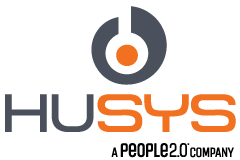With time evolving and technology improvising, people are getting more addicted to the internet. They get so engrossed in surfing their interests till late into the nights, that the next morning when they get to work, they are tired and dull. Many corporates are struggling to engage their employees, but there are a few of them which are designing their own ways by formulating the right HR policies.
Similarly, if your HR strategy is not based on the right pillars, it can lead to substantial damage to the business. HR strategy plays a critical role in HR department and helps lead organizations to achieve desired business goals, and for employees, their individual goals.
HR strategical plan helps leadership team execute accurate and precise business strategical goals. It helps to prepare the current staff and also forecast required people to the organization in developing the right future managers. A good succession plan, by limiting interruptions, can make a drastic change in the structure and management.
Let’s see what helps in the drafting of an accurate HR strategy.
Identify Your Current Employee Strength
The primary step in an HR strategical plan is to identify your current employee’s knowledge, skills and the ability to contribute to the organization. Evaluate your employee strengths -education level, additional certifications, Interpersonal skills, ability to execute and defining their core strengths.
You can delve deeper into his career aspects to evaluate his alternative strengths beyond his job roles. For instance, if a current employee is a core sales person and he has the ability to influence others, online, through the digital marketing activities, you can identify these additional skills by increasing personal conversations with employee. It can be either formal or informal meetings. You can extend him a coffee or a dinner invite to maintain a personal relation and get to know more him better!
The more the information the better. It’s a good idea to note an employee’s strengths and skills, document all the required information like his CV, education history, key skills, certifications, projects, performances and more. It’s good to capture all the information of employee with his or her talents; even for employees, specially during appraisals, it is valuable to document their strengths.
Complete The Legal Requirements
Based on the organization requirement in filling the gaps, new talents are hired. When on-boarding a new employee, it’s essential to follow and fulfil the legal requirements in insuring the employee and business.
For example – A new employee may be hired as a full employee or like a consultant. A consultant needs to accept the terms and conditions on NDA and acknowledge the same by agreeing on the compensation and other terms.
An internal employee, who is hired, needs to complete the other formalities like submitting the previous documents, getting a clear idea on the health insurance policies etc.
Draft Your Employee Engagement And Development Plans
Employee engagement and development plays a prominent role in every organizations and is vital for company’s growth. As engaged employees create value to the organization, it is the duty of HR’s to create a strategy to engage in better employee’s value.
It is advantageous to include the following into your culture:
Engage for success
Most of the successful companies follow a competitive environment in their culture – in the form of tracking employee achievement tracking and providing financial support in the form of incentives, gift vouchers, rewards and recognition.
Hear their voices
Conduct an internal survey for employees and get to know their inner voices. It creates immense value within the organization.
Create Career Progression Plans
As employees are primary value assets of the company, they should grow along with the company’s growth. But most of the companies primarily invest their time on reaching their financial goals and overlook employee career progression plans.
It’s useful if within the organization, right in-house training can be imparted for the right talents based on their targets and goals to be achieved. It creates great brand value for a growing organization.
Enable Your Corporate Image
When one thinks about branding, only marketing campaigns comes into everyone mind -creating of brand logos, doing digital creatives and more. But we forget about the HR department!
Big entities like Google, Apple, Coco Cola, and Nestle have a common objective i.e. corporate culture and employee engagement. Many people will argue that strong brands have ability to bring in strong talents, but strong employee engagement creates strong branding.
Here are few tips to enable your corporate image
Streamline the on boarding process
As we all know first impression is the best impression, create a value while making the administrative process and help them to make comfortable. As technology is progressing you can offer them on boarding box where in new hires are given USB’s, Power Banks, Tablets, Laptops by adding your brand images, introduction videos and culture showcasing videos etc.
HR Rewards Program
Rewards and Recognition programs play a prominent role in engaging employees. It is also a great communications strategy to build a robust relation with employees and motivate them.
Similar strategies cannot be executed with all the employees. There need to be different ones based on the age group, designations, and experience or based as per the requirements. For instance, if an employee is a sales representative, reward him with an incentive scheme, or on a long term, an offer of a retirement benefit. Employee satisfaction, shared by and to other employees, can help enhance brand value.
Perform Gap Analysis
Gap analysis helps identify loop holes within the organization for implementation of HR best practices. In terms of HR, it can identify and assess employees, measure their performance levels, and assess if the employees have the skill to work towards future growth. Additionally, it helps review job descriptions, HR policies, hand books, training programs, health and insurance benefits, leave policies and performances. Most of the companies perform gap analysis when corporate revenue is dipping down; it is good practice to conduct on a yearly basis to augment organizational growth.
Review and Increase Future Hirings
Conducting Gap analysis provides a clear idea on potential strengths and weaknesses of the employees. Most organizations face challenges in hiring more strategically and help set the organization for long-term sustainable success – from employee packages, technological impacts, company culture, brand value, revenue and more. Implementing a career development program can improve employee engagement, encourage retention and establish a pipeline of promotable talent. Concentrating on creating brand value with the corporate culture help organizations to move forward together.
Defining HR strategy and planning is a continuous process. Your next steps are to identify the best solutions to fill these gaps and then act on those plans in engaging employees towards organizational goals.
In case, you are facing challenges in designing or implementing such strategies, we are here to help you.
For any related queries, do connect with us at reach@husys.net or call us on +91 72040 12636.

















